
Project Scope Template – 5 Tips For Successful Project Management

Preparing a project scope is a crucial skill for every project manager. While working on an ambitious project can be exciting on its own, you won’t avoid problems arising along the way. No project is perfect, so you might often find the expenses are higher than expected, and you’ve missed deadlines several times. Thus, mistakes will happen, even with the best project planning. But what’s worse is having no project management at all, then you’re up for a disaster.
Even a free project scope template is all you need to empower your team to focus on specific tasks efficiently, with almost no delays. Not to mention cost efficiency, since no one has to work additional hours thanks to better work organization. Sounds simple, but that’s really the least you need to run a successful project. Therefore, here you’ll learn what good project scope is, how to create one, and use one of the ready-made templates.
Project Scope Template – 5 Tips For Successful Project Management
What is a Project Scope?
The project scope includes a thorough planning process, including deliverables, deadlines, and budgets. Everyone can benefit from a fixed project schedule. Before the plan goes live, it should be approved by the project team to avoid any misunderstandings. Make sure the project scope statement is unanimously approved.
Such a plan ensures that your workload stays within the agreed working hours. And even if it seems like it’s going beyond the chart, you’ll have enough time to prevent it. This also keeps everyone from missing deadlines and exceeding budget since everything is done on time and within working hours.
How to Prepare a Project Scope Template?
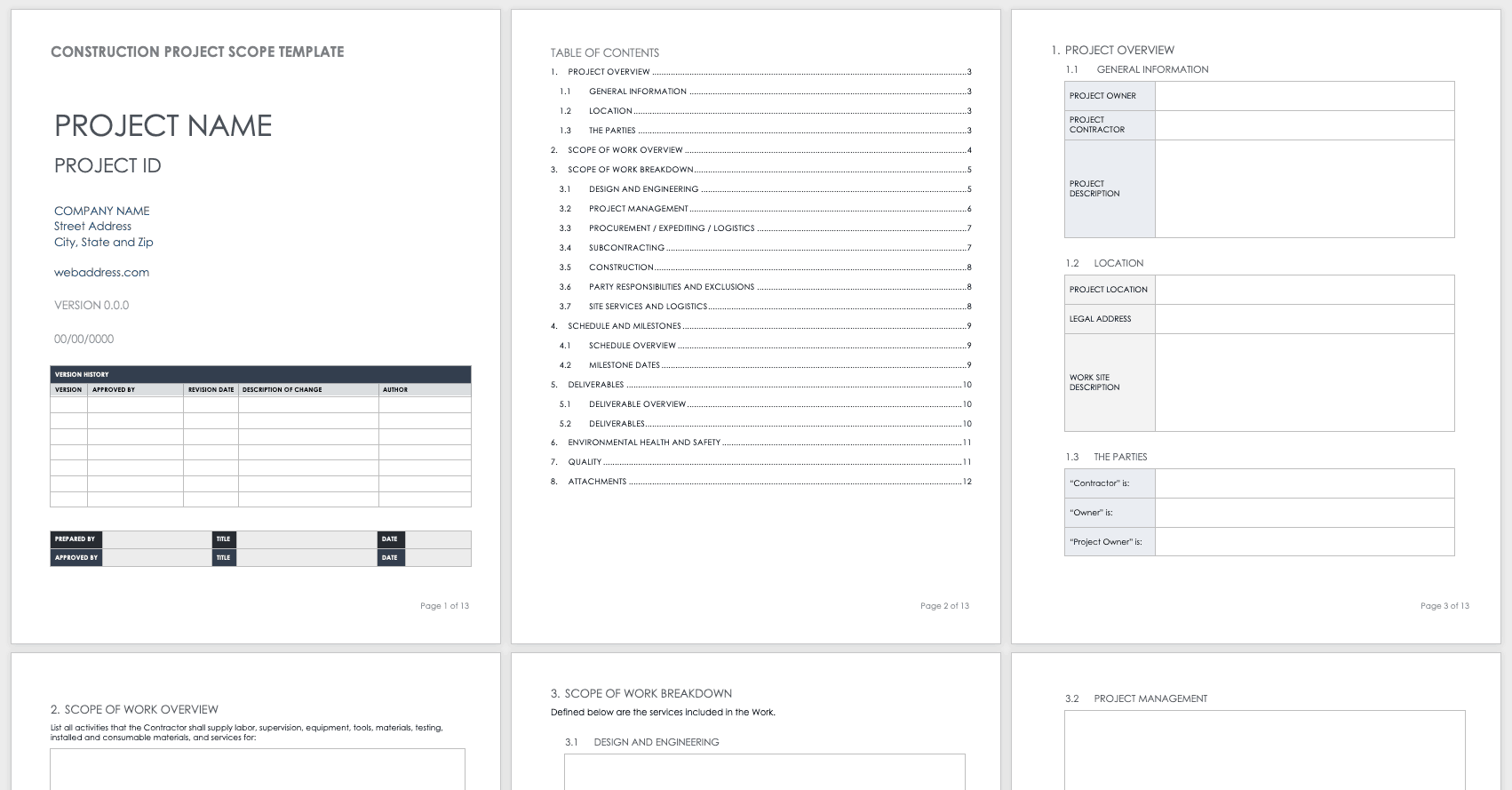
With the clear benefits out of the way, it’s time to focus on what to include in a project scope template. These elements are especially important when working with clients, but they’re also viable when working alone. Here are the key elements to include.
Timeline
With a timeline, you’ll be able to evaluate when you want to deliver your work. It’s also critical information for your clients, as it shows your team’s level of organization. You can easily see the beginning and end dates for important milestones and the project as a whole. You can show it as a bulleted list to make it clear and easy to read for your clients. That way, they can instantly review it and send back recommendations if needed.
Milestones
Milestones can be described as smart goals that lead to the project’s completion. This includes meetings, major deliverables, or delivery dates (aka deadlines). It’s crucial for your clients to keep track of the progress of the project and when meetings will happen.
Deliverables
When you define project deliverables, clients can clearly see what they’re paying for and what they get as a final outcome. For example, if you’re setting up a website, deliverables should include a brief, wireframe, mockups, and a final prototype. It helps clients understand what assets they actually have when the project is complete.
Reports
Post regular updates so your clients can keep track of the project whenever they want. Make sure the report is thorough and includes all necessary info about the project. Clients should be able to read at what stage the project is, how many milestones you’ve accomplished, and if it stays within the budget. Make it clear when stakeholders can expect a report, i.e., every Thursday.
Budget
Be transparent about the project’s costs and what you’ll deliver within the agreed amount. You can also include a disclaimer about tasks outside the project’s range being charged an extra fee to avoid scope creep.
Four Essential Elements When Creating a Project Scope
With the theory out of the way, it’s time to piece all elements together and create a scope for your next project. Adding these elements will greatly benefit your whole project.
1. A Rough Outline
The essential elements needed to be included in the project’s scope. They go as follows:
- Key details. Essential information like the project’s name, manager, and start date.
- Purpose of the project. Write what you want to accomplish and all project goals.
- Exclusions. Everything that’s not covered by the scope of work. For example, when creating a website, you can inform stakeholders that hosting services are not included once the website goes live.
- Sign-off. An area where stakeholders can sign their names showing they agree with the project scope.
Always consult the above elements with your team to accurately estimate the costs of performing all the tasks. Their insights will ensure accuracy and will minimize the risk of any increased expenses.
2. Cooperate With Your Team
Even the best project scope won’t be of great use if team members don’t work on the same page. You must ensure everyone agrees with the timeline, deliverables, and goals. That being said, involve your team right from the start and ask for their opinion on other parts of the project, such as:
- Project goals. Are they realistic? Can they be completed within the given timeframe? Consult with your team to get accurate estimates on how long the project will take to complete.
- Expectations. Each deliverable takes time. Try to estimate how much time you need between each to wait for client feedback. Feedback also takes time, so it’s also crucial to estimate that before moving to the next deliverable.
- Exclusions. Clients may ask for services outside the project’s scope that you can ask an additional price for. Also, think of any tasks from previous projects that negatively affected it that can be excluded this time.
3. Focus on the Project’s Deliverables and Milestones
The project scope is not a detailed work structure, so it shouldn’t contain every project deliverable. Focus on necessary tasks instead. Clients often refer to the project scope to check whether you keep promises or not. If you struggle to complete one or more milestones in time, analyze whether you need that many.
Find out if it’s viable for the project and helps reach the final goal. For example, the marketing campaign is a tangible asset worth allocating as a deliverable, but a meeting plan to discuss it isn’t.
Once you’ve done with the deliverables, you must tie them to the milestones with a specific deadline. This way, you’ll create a viable schedule and keep everyone on task.
4. Make it Clear and Cohesive
Briefly outline what’s included in the project – from tangible tasks to feedback rounds – everything necessary to finish a specific project. Also, don’t forget to point out exclusions for your clients. If they ask for something outside the scope, you can refer to the exclusions section to point out it's not a part of the agreement.
5. Finish The Scope and Get It Signed
Ensure you’ve included everything as intended, and get the project signed. Keep your project scope cohesive; three pages are usually more than enough. The document should be easy to navigate, so your clients and key stakeholders can spot the most important data instantly. When everyone agrees with the scope and you have all the necessary signs, ensure everyone has a copy. It’s easier to refer back to it once the project kicks off.
Project Scope Templates
Once you know what to include in a project scope, you can choose one of our templates and create your own project scope document. Use Microsoft Word and Excel to open the templates below. We're here to the rescue if you don’t own any document editing software and you find official Microsoft prices off-putting. At RoyalCDKeys, you can purchase Microsoft Office 2021 Professional Plus Key Retail Global for less than $10.
Preliminary Project Scope Scope
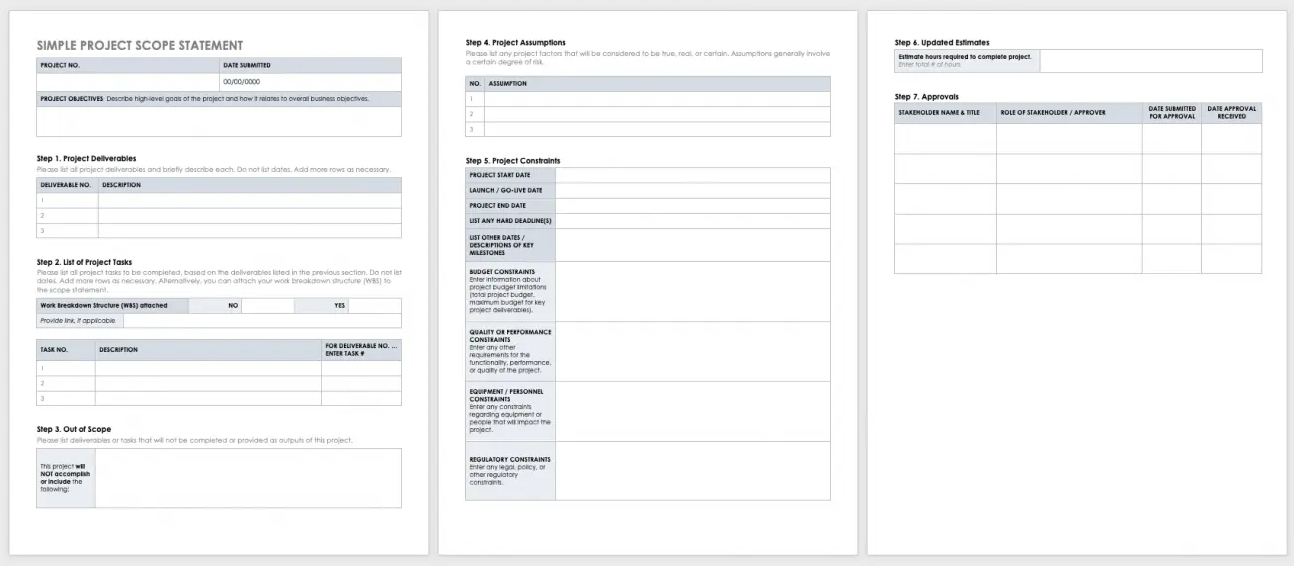
If you need a preliminary plan, this template is for you. There are sections for objectives, deliverables, assumptions and constraints, and important milestones. It’s not hard to use it as your own plan since you don’t have to edit anything; just fill it according to your needs. This is a great solution if you want to save time with project planning.
Download:
Simple Project Scope Template
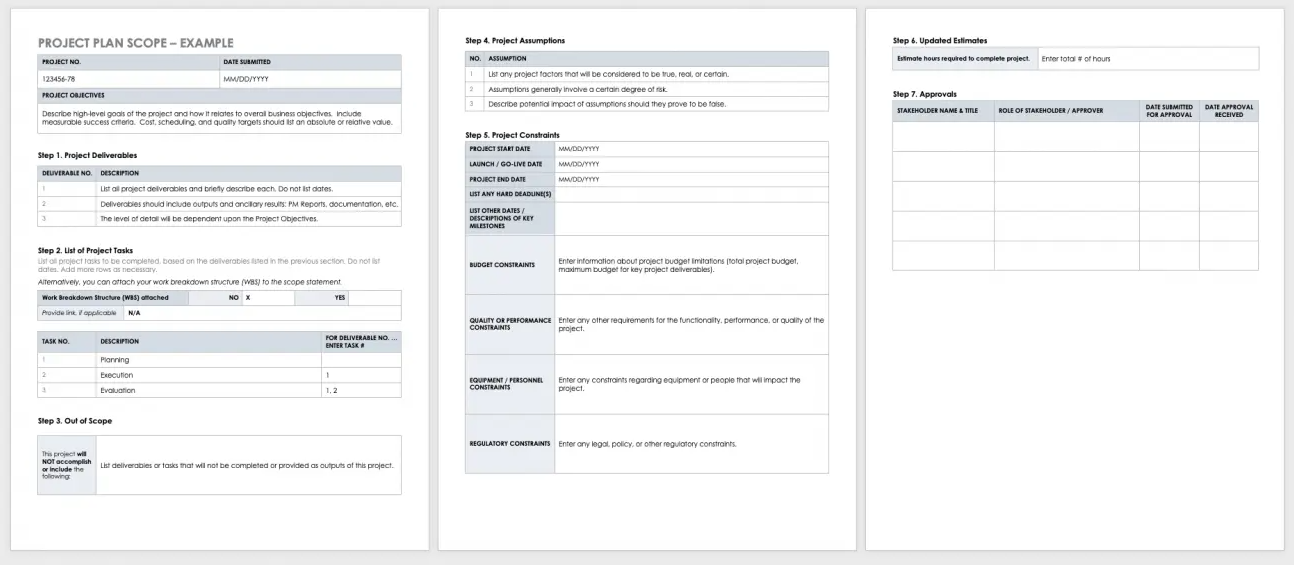
This template is for you if you’re new to designing project scopes and working on a small project. It’s not very advanced but provides you with the most essential sections that should be included in every project scope. Here, you will easily outline the project scope, deliverables, exclusions, milestones, and costs. There’s also a section for project details at the top and a place for stakeholder signatures at the bottom.
Download:
Baseline Project Scope Template
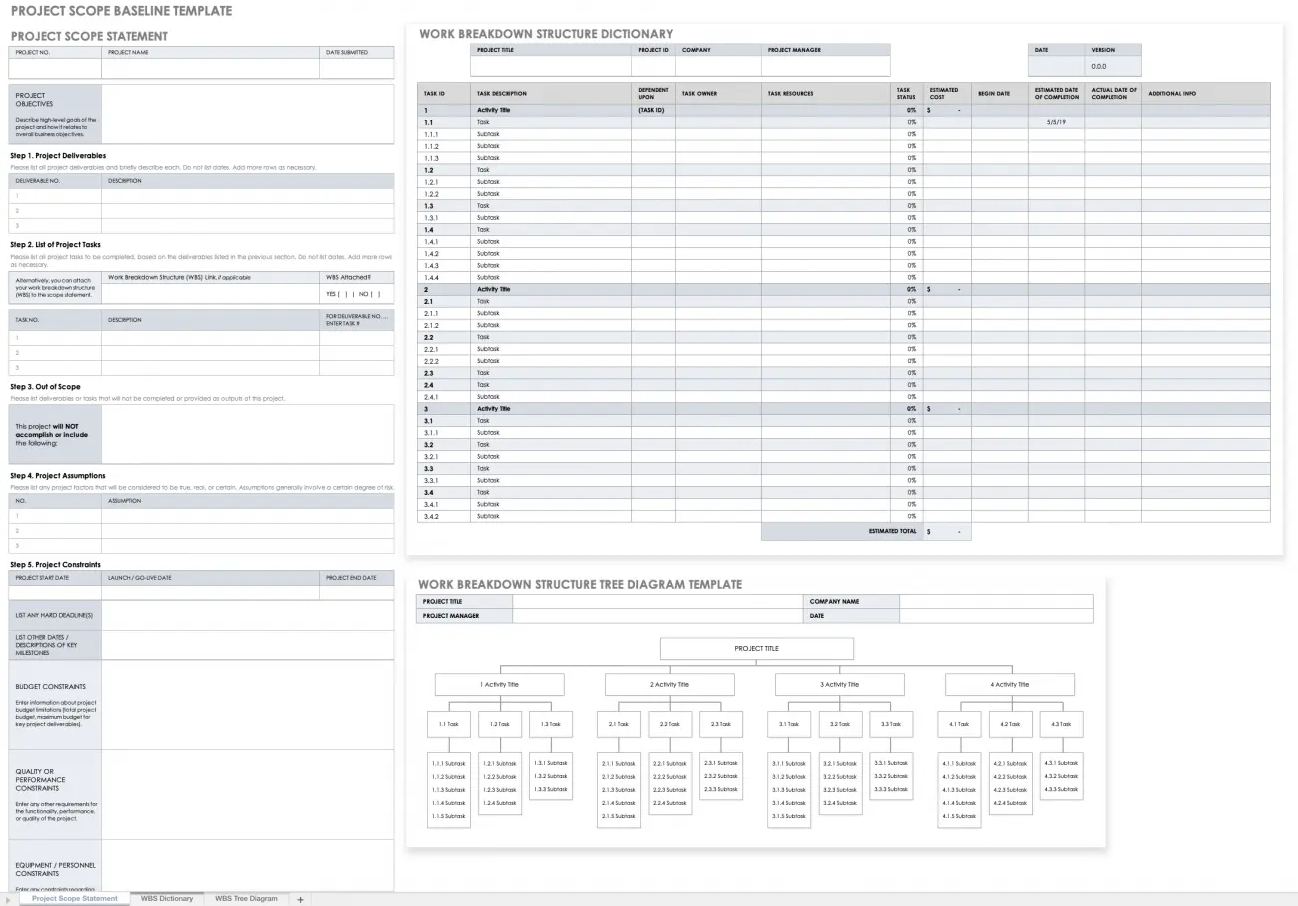
We’ve covered a template for beginners; now it’s time for something for more advanced users. With this baseline template, you can easily manage scope creep with its work breakdown structure and WBD dictionary. The dictionary has WBS numbering, task information including its owner and status, and several other details to help you with planning and tracking. Also, you can show project levels and tasks using a tree diagram.
Download:
Construction Project Scope Template

We’ve said before that your project scope shouldn’t have more than three pages. There is one exception, however – construction project. Such projects are extremely complicated, and it’s impossible to be concise with them. Therefore, the template includes sections for a project overview, scope breakdown, schedules, and a list of deliverables and reports. The outline can be modified to suit all sorts of construction projects.
Download:
IT Project Scope Template
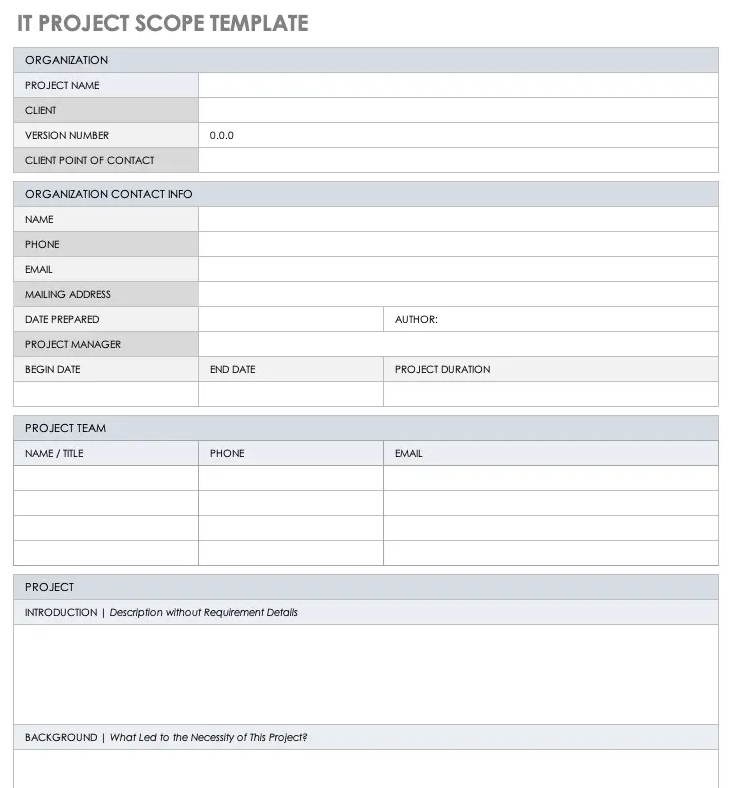
A template specifically designed for IT projects. It includes all the necessary sections required in the sector: background information, resource requirements, a timeline, risks, and more. There’s also a section regarding project team members, expenses, and completion criteria. This template is the way to go if you want to bring your IT project to a higher organizational level.
Download:
Website Project Scope Template
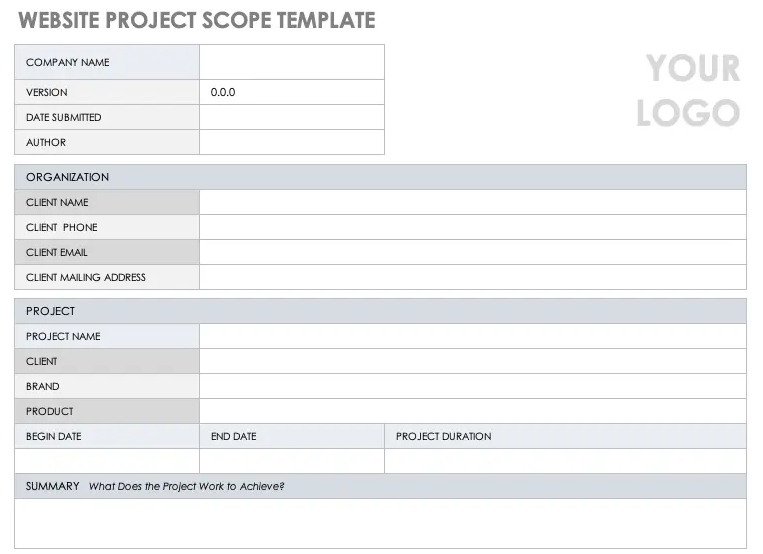
Staying in the IT department, we have something for website designers. This template has everything you need to manage a website design project. Costs, assumptions, constraints, deliverables – every necessary section is included. Customize it to your liking, add all the necessary information, and include your company’s logo.
Download:
Elevate Your Project Management
As you can see, project scope management can increase your workflow immensely, showing your potential clients that you can be relied upon. Follow our steps, download one of the included templates, and become the manager your team loves to work with.
As a last tip, we advise you to pace yourself. Project scoping should be done thoroughly, so don’t rush through it, or you’ll lose important details and elements crucial to your project. On the flip side, don’t take much time writing it, especially when deadlines chase you.












